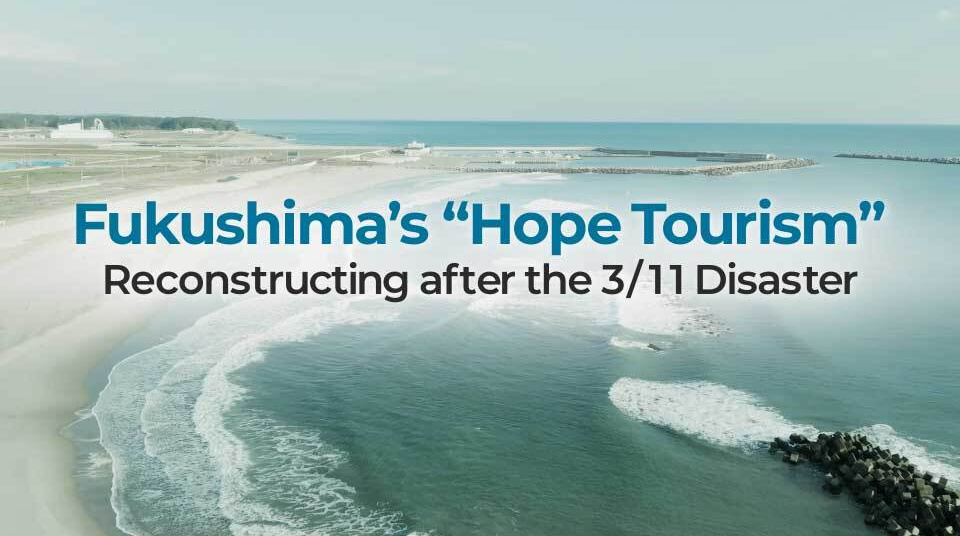Fukushima Prefecture is the only place on Earth to have encountered the compound disaster of a powerful earthquake, a devastating tsunami, and a nuclear accident. The prefecture-wide endeavor Hope Tourism takes visitors to afflicted areas to learn from this disaster with their own eyes and ears, offering a personal experience that redirects their behavior toward building a more sustainable future.
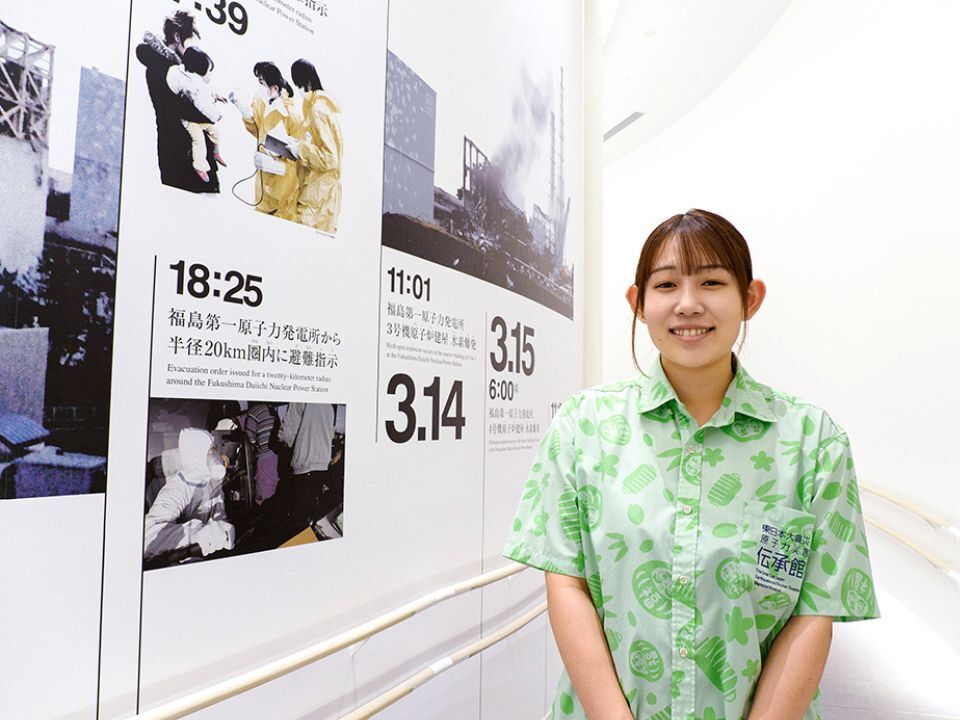
ENDO Miku is a staff member and “storyteller” at the Great East Japan Earthquake and Nuclear Disaster Memorial Museum. She often speaks to children born after the disaster, feeling that she can help them better understand it because she is closer to them in age.
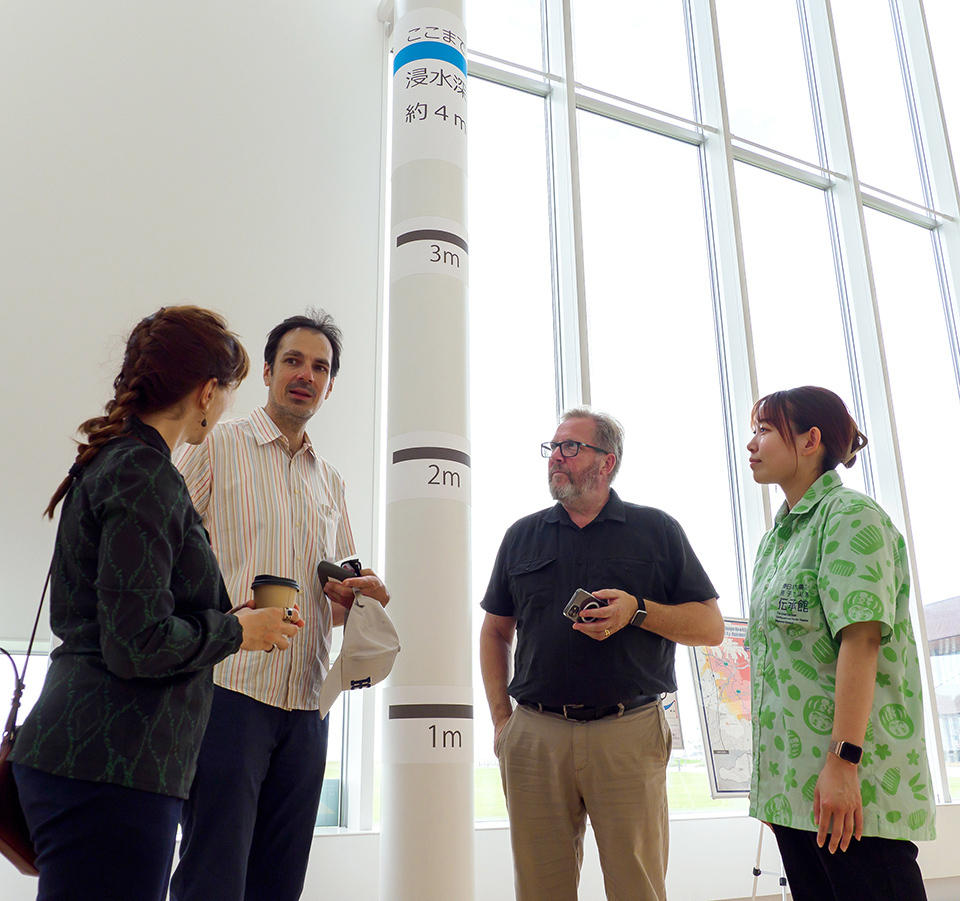
Visitors learning that the tsunami reached a height of 4 meters in the spot where the Memorial Museum stands today.
“Dark tourism,” in which tourists hoping to experience history visit sites of human tragedies, such as the remnants of wars and natural disasters, is drawing attention around the world. “Hope Tourism” is the name given by the prefecture to a study tour that takes people around Fukushima for immersive understanding. It has been actively accepting visitors from Japan and abroad since 2016, and the Memorial Museum is one of its venues. Participants visit areas devastated by the disaster and see Fukushima as it really is, experiencing aspects that remain absent from ordinary media coverage. They talk to local residents and participate in workshops where they consider how lessons drawn from the disaster can be utilized for the future. The hope is that visitors will gain new perspectives through “seeing, listening, and considering.” The tour touches on issues such as the disposal of soil collected during decontamination procedures, and population outflows.
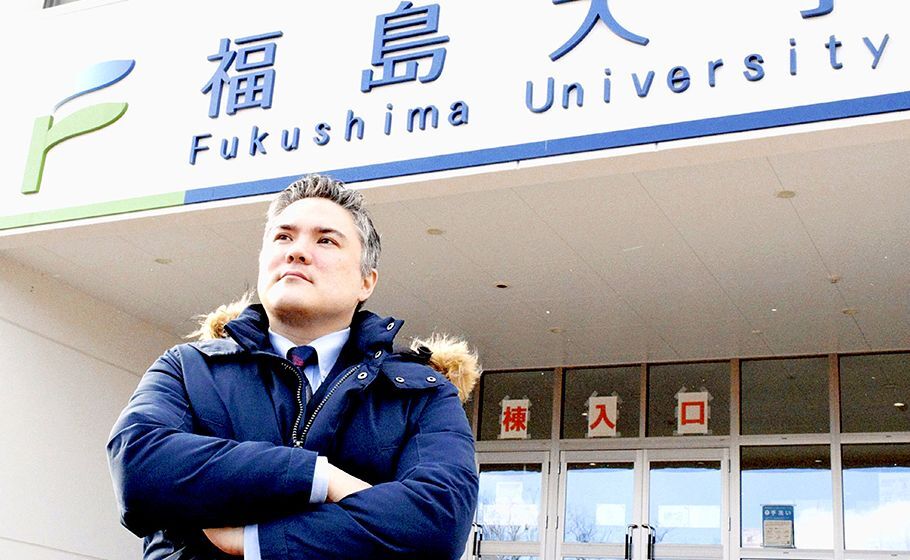
Canadian-born Associate Professor McMichael came to Fukushima entirely by chance. He was assigned to Fukushima as a Coordinator for International Relations of the Japan Exchange and Teaching Programme, and fell in love with the warmth of its people and its beautiful nature. “I was frustrated by the world’s misconceptions about Fukushima after the nuclear accident,” he said. That is why he started study programs for international students making sure that the reality of the situation can be made known. THE FUKUSHIMA MINYU SHIMBUN
“When you hear the term Hope Tourism, it may be misunderstood as solely emphasizing recovery, but that’s not the case. Participants look at both the light and dark sides of Fukushima, feel hope in the resilience of Fukushima, and leave with a newfound affection for the region. As a result, the increase in people who understand Fukushima becomes a source of hope for the local residents,” says William McMichael, associate professor at Fukushima University’s International Center.
McMichael was a step ahead of the prefecture when he launched the Fukushima Ambassadors Program in 2012. This is an innovative short-term study-abroad program in which international students spend 10 days in Fukushima first learning the reasons for the nuclear accident and the details of the compound disaster, then discussing the issues involved, and finally considering Fukushima’s future. Activities may include visiting the Fukushima Daiichi Nuclear Power Station or helping plant cherry trees in disaster-affected communities. The content of the program has evolved along with the situation, but the primary aim is to show the world what is actually taking place in the region.
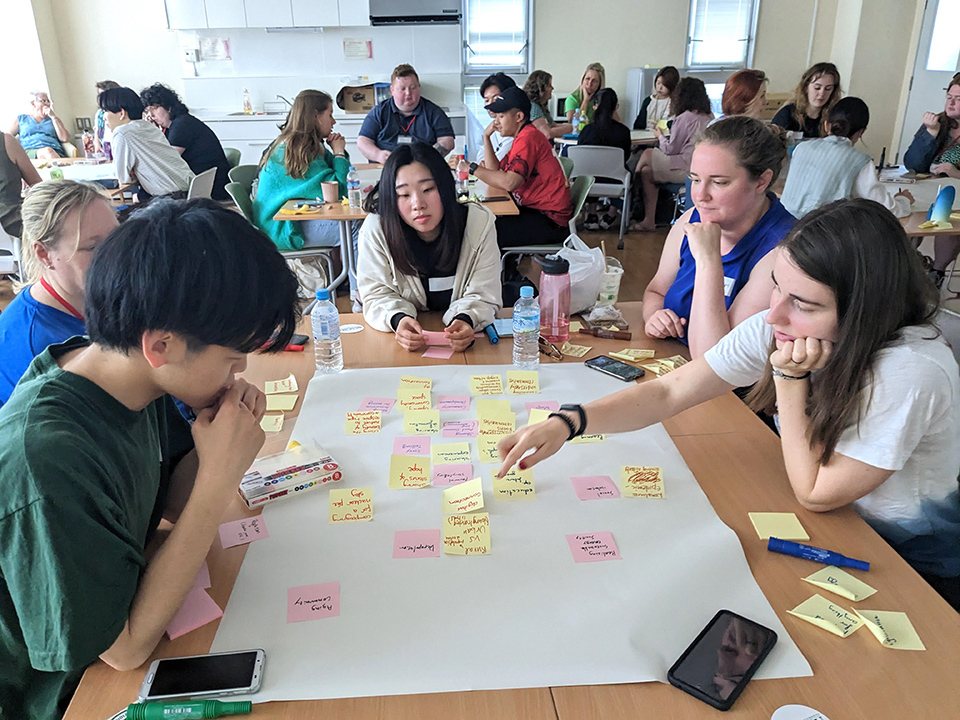
In McMichael’s study program, students discuss in groups the lessons learned and the knowledge they wish to share at the end of their tour.
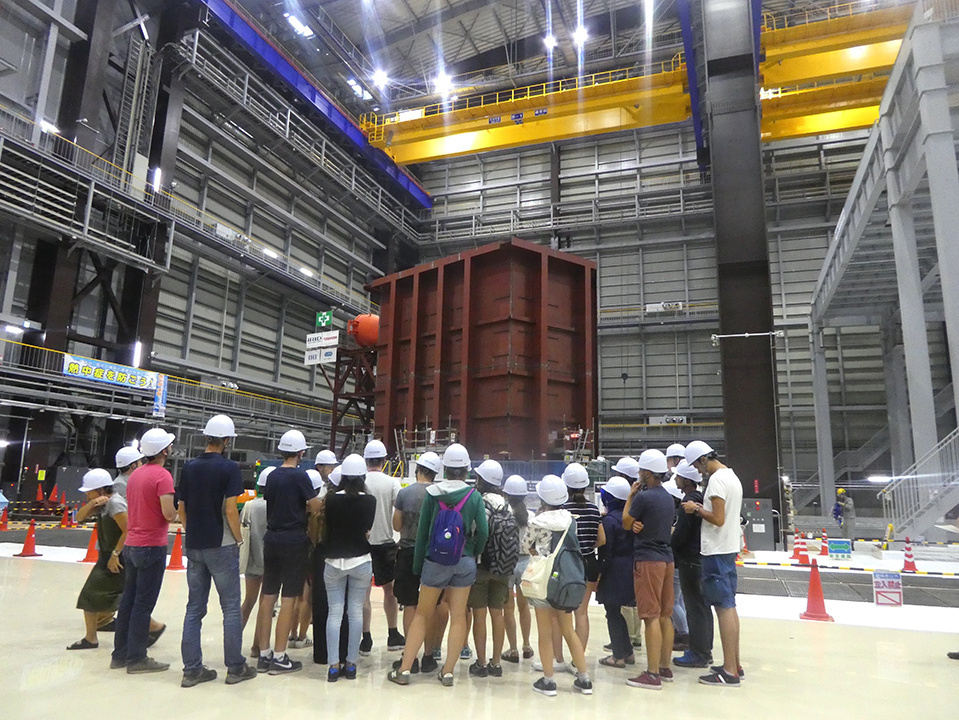
A visit by international students to the Naraha Center for Remote Control Technology Development, which is developing remote robots to conduct the decommissioning of Fukushima Daiichi Nuclear Power Station.
The program has been conducted 15 times, with more than 200 international student participants. “Many students continue to hold Fukushima in their hearts even after returning home,” said McMichael. “For example, students studying nuclear energy are left with a profound impact the moment they arrive in Fukushima. Despite the immense challenges the region has faced, they witness the resilience of its people and gain knowledge beyond what textbooks can offer. This experience inspires them to take on their responsibilities with a strong commitment to safety. In essence, they come to Fukushima to learn about the disaster, but end up learning invaluable life lessons from their experience. I find it truly heartening to see this level of dedication.”
McMichael is presently training English-speaking guides to expand Hope Tourism. A certain phrase is deeply etched in his memory—words shouted out at a series of outdoor rock festivals held in the prefecture half a year after the disaster: “Nothing beats Fukushima, does it?!” True to these words, the people of the prefecture gain encouragement by spinning threads of hope with the help of visitors who learn from the Fukushima experience. Together, they are taking steps into a bright future.



























